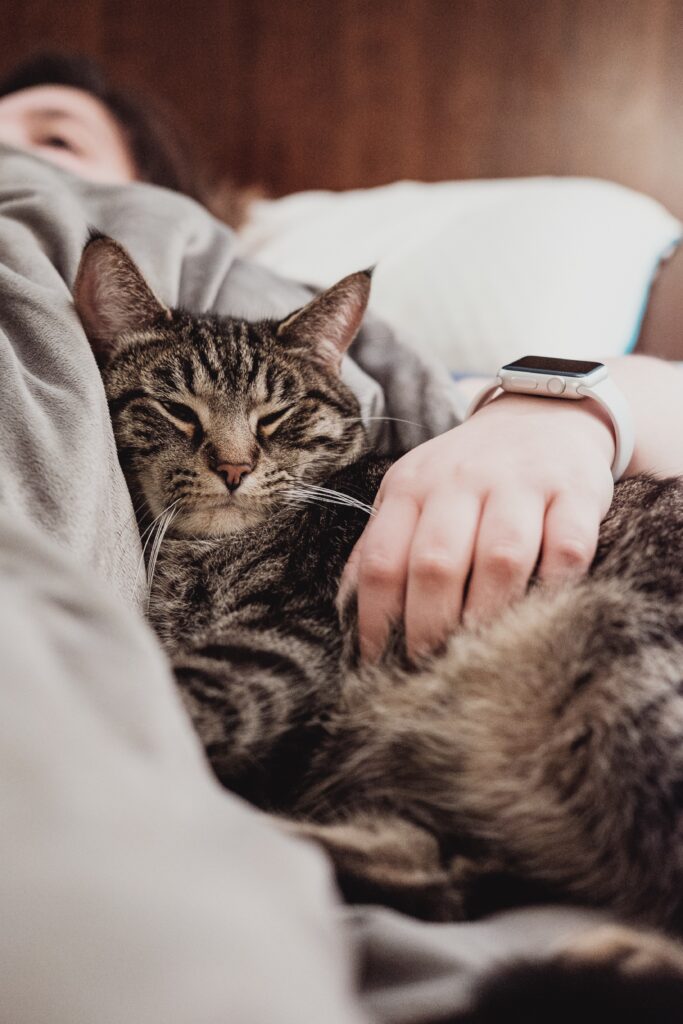
If you find yourself embarking on a journey with your feline friend, the question of how to transport them safely and comfortably may be at the forefront of your mind. After all, cats are known for their independent and sometimes stubborn nature, making transportation a delicate task. Whether you’re moving to a new home or going on an extended vacation, this article will provide you with valuable insights on the best ways to transport your cat, ensuring their well-being throughout the journey. So, let’s explore some tips and tricks to make your cat’s travel experience a stress-free and enjoyable one.
Table of Contents
Choosing the Right Carrier
Size of the carrier
When choosing a carrier for your cat, size is an important factor to consider. You want to make sure that your cat has enough space to stand, turn around, and lie down comfortably. A carrier that is too small can make your cat feel cramped and anxious, which may lead to a stressful travel experience.
Material of the carrier
The material of the carrier is another crucial aspect to consider. Opt for a carrier that is sturdy and durable, as you want it to provide a secure and safe environment for your cat. It’s also essential to choose a carrier made of breathable materials to ensure proper ventilation during the journey.
Accessibility of the carrier
Accessibility is key when it comes to choosing the right carrier for your cat. Look for carriers that have multiple access points, such as top-loading or front-loading doors. These allow for easy and stress-free entry and exit for your cat. Additionally, carriers with removable pads or liners make it easier to clean up any accidents or spills that may occur during travel.
Preparing Your Cat for Travel
Visit the veterinarian
Before any travel, it’s vital to take your cat to the veterinarian for a thorough check-up. The veterinarian can ensure that your cat is in good health and up to date on vaccinations. They can also provide any necessary medication or advice specific to your cat’s needs, making the journey as comfortable and safe as possible.
Get your cat comfortable with the carrier
Many cats associate carriers with vet visits or negative experiences, leading to anxiety or resistance. To alleviate this, get your cat familiar and comfortable with the carrier before the trip. Leave the carrier open and easily accessible in your home, place treats or toys inside to encourage exploration, and gradually associate positive experiences with the carrier. By doing so, your cat will view the carrier as a safe and familiar space, reducing stress during travel.
Pack necessary supplies
Don’t forget to pack essential supplies for your cat’s journey. This includes enough food for the duration of the trip, bottled water, bowls, a litter box with litter, and any necessary medications or grooming tools. It’s also a good idea to have a familiar blanket or towel with your scent on it to provide comfort and familiarity during the journey.

Choosing the Right Transportation Method
Air travel
If you’re traveling long distances or overseas, air travel might be the best option. However, it’s important to research and understand the airline’s pet policies and requirements before booking your ticket. Some airlines allow cats in the cabin, while others require them to travel in the cargo hold. When traveling by air, it’s crucial to ensure your cat’s carrier meets the airline’s guidelines and provides adequate ventilation and security.
Car travel
Car travel can be a convenient and less stressful option for both you and your cat, especially for shorter distances. Ensure your cat’s carrier is securely placed in the car, either with a seatbelt or in a well-ventilated area. Remember to make frequent stops for bathroom breaks and allow your cat some time outside the carrier to stretch, hydrate, and use the litter box if necessary.
Train or bus travel
Train or bus travel can also be an alternative for transporting your cat, primarily if the journey is not too long. However, it’s crucial to check with the specific train or bus company about their pet policies before embarking on the journey. Some companies may require cats to be in carriers, while others may allow them to travel on a leash or in a designated pet area.
Tips for a Smooth Journey
Keep your cat’s routine unchanged
Cats are creatures of habit, and sudden changes can cause stress and anxiety. During travel, try to keep your cat’s routine as unchanged as possible. Stick to the same feeding schedule and provide familiar toys or bedding to maintain a sense of familiarity and comfort. By doing so, you can help your cat feel more secure and less anxious during the journey.
Provide familiar and comforting items
To ease your cat’s stress during travel, bring familiar and comforting items along. This can include your cat’s favorite toys, a blanket with your scent, or even a pheromone spray or wipe that mimics a cat’s natural calming scent. These items can provide a sense of security and familiarity, making the journey more comfortable for your cat.
Minimize contact with strangers
During travel, it’s best to minimize contact between your cat and strangers. This can help reduce stress, especially for cats who are not accustomed to interacting with unfamiliar people. While it may be tempting for others to want to pet or play with your cat, politely inform them that your cat needs some quiet and space to remain calm during the journey.

Feeding and Hydration
Feeding schedule and portion control
Maintaining a proper feeding schedule and portion control is crucial when traveling with your cat. Stick to your cat’s regular feeding routine as much as possible to avoid digestive upsets. Additionally, consider using a portion control method, such as pre-measured meals or timed feeders, to ensure your cat is receiving the right amount of food and to prevent overeating.
Providing water during the journey
Hydration is essential during travel, especially for long distances. Ensure that your cat has access to fresh water throughout the journey. Use spill-proof bowls or water dispensers that are secure and easy to refill. It’s important to note that some cats may be hesitant to drink during travel due to stress, so monitor their water intake and offer water at regular intervals to ensure they stay hydrated.
Safety Measures
Identification tags and microchipping
Accidents can happen, and it’s crucial to have proper identification for your cat in case they become lost during travel. Ensure your cat is wearing a collar with identification tags that contain your contact information. Microchipping is also highly recommended, as it provides an additional layer of identification that cannot be lost or easily removed.
Properly securing the carrier
Properly securing the carrier is essential to ensure your cat’s safety during travel. When using a car, secure the carrier using a seatbelt or with a carrier strap that attaches to the car seat. This prevents the carrier from sliding or tipping over during sudden stops or turns. For air travel, adhere to the airline’s guidelines for securing the carrier in the cabin or cargo hold.
Monitoring temperature and ventilation
Maintaining a comfortable temperature and proper ventilation is crucial for your cat’s well-being during travel. Ensure the carrier is placed in an area of the vehicle or airplane cabin where temperature fluctuations are minimal. Avoid exposing your cat to extreme heat or cold. Additionally, ensure that the carrier provides adequate ventilation to prevent overheating and ensure a constant supply of fresh air.

Managing Anxiety and Motion Sickness
Using pheromone sprays or wipes
To help reduce anxiety during travel, consider using pheromone sprays or wipes that mimic feline facial pheromones. These natural calming scents can help alleviate stress and create a more relaxed environment for your cat. Simply spray or wipe the carrier with the pheromone product before and during travel to promote a sense of security and calmness.
Consider anti-anxiety medications
In cases of severe anxiety, it may be necessary to consult with your veterinarian about anti-anxiety medications for your cat. These medications can help keep your cat calm during travel and can be especially useful for long journeys. However, it’s essential to discuss the risks and benefits of medication with your veterinarian and follow their advice and dosage instructions carefully.
Dealing with motion sickness
Some cats may experience motion sickness during travel, especially in cars or on winding roads. If your cat is prone to motion sickness, avoid feeding them a large meal before the journey. Additionally, consider speaking to your veterinarian about anti-nausea medications or natural remedies that can help alleviate motion sickness symptoms. Providing a comfortable and stable carrier can also minimize motion sickness-related stress.
Handling Emergencies
Knowing the closest veterinary hospitals en route
Before embarking on your journey, research and familiarize yourself with the closest veterinary hospitals along your route. In case of emergencies or unexpected health issues, having this information readily available can save valuable time and help ensure prompt medical attention for your cat if needed.
Staying calm in case of emergencies
If you encounter an emergency situation during travel, it’s crucial to stay calm to better assist your cat. Remember that your cat can pick up on your emotions, so remaining composed will help them feel more secure. Whenever possible, contact a veterinarian for guidance and follow their instructions.
Handling unexpected stress or illness
Travel can sometimes be stressful for cats, and unforeseen situations may arise. If your cat displays signs of stress or illness during travel, it’s important to address the issue promptly. Comfort your cat, provide a quiet and secure environment, and seek veterinary advice if necessary. Taking proactive measures to address unexpected stress or illness can help ensure your cat’s well-being throughout the journey.
Post-Travel Care
Providing a safe and quiet space
Upon reaching your destination, it’s essential to provide your cat with a safe and quiet space to decompress and recover from the trip. Set up a designated area with familiar bedding, food, water, and a litter box. Allow your cat to explore and adjust to the new surroundings at their own pace, offering comfort and reassurance as needed.
Monitoring your cat’s behavior and appetite
After travel, closely monitor your cat’s behavior and appetite for any changes. It’s normal for cats to take some time to readjust to their environment, so be patient and understanding. If you notice prolonged changes in behavior or appetite, consult with your veterinarian, as they can offer guidance and address any underlying health concerns if necessary.
Scheduling a follow-up veterinary visit
Following travel, it’s a good idea to schedule a follow-up visit with your veterinarian. This allows them to evaluate your cat’s overall health, ensure they have fully recovered from the journey, and address any specific concerns or questions you may have. Regular veterinary care is an important aspect of ensuring your cat’s well-being, even after travel.
Alternatives to Traveling with Your Cat
Pet relocation services
In some cases, it may be more suitable to enlist the help of a professional pet relocation service. These services specialize in transporting pets and can provide a stress-free travel experience for your cat. They handle all the logistics, including transportation, paperwork, and ensuring your cat’s comfort and safety throughout the journey.
Hiring a pet sitter or boarding facility
If traveling with your cat is not feasible or would cause undue stress, hiring a pet sitter or utilizing a boarding facility can be excellent alternatives. A trusted pet sitter can come to your home to care for your cat, ensuring they receive proper attention, feeding, and companionship throughout your absence. Boarding facilities offer a secure and supervised environment where your cat can stay and receive care from trained professionals.
Considering temporary separation
Depending on the circumstances, temporary separation from your cat may be the best option for their well-being. This could involve leaving your cat with a trusted family member or friend who can provide them with the care and attention they need while you are away. Temporary separation can be less stressful for some cats, ensuring they remain in a familiar and comfortable environment during your absence.
In conclusion, choosing the right carrier, preparing your cat for travel, selecting the appropriate transportation method, and taking necessary safety measures are all vital steps in ensuring a smooth and stress-free journey for your cat. By following these tips and understanding your cat’s individual needs, you can make traveling a positive experience for both you and your feline companion. Remember to prioritize your cat’s well-being and comfort throughout the journey, and don’t hesitate to seek advice from your veterinarian if needed.
